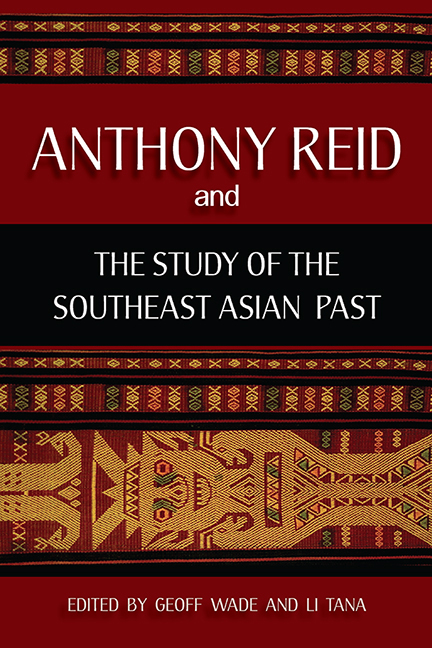Book contents
- Frontmatter
- Contents
- Acknowledgements
- The Contributors
- PART I Introduction
- PART II The Scholarship of Anthony Reid
- PART III Southeast Asia in the World
- PART IV Early Modern Southeast Asia
- PART V Modern Southeast Asia
- 13 Hadhrami Projections of Southeast Asian Identity
- 14 Absent at the Creation: Islamism's Belated, Troubled Engagement with Early Indonesian Nationalism
- 15 Chinese Shrines Contested: Power and Politics in Chinese Communities in Bangkok in the Early Twentieth Century
- Appendix
- Index
- Plate section
13 - Hadhrami Projections of Southeast Asian Identity
from PART V - Modern Southeast Asia
Published online by Cambridge University Press: 21 October 2015
- Frontmatter
- Contents
- Acknowledgements
- The Contributors
- PART I Introduction
- PART II The Scholarship of Anthony Reid
- PART III Southeast Asia in the World
- PART IV Early Modern Southeast Asia
- PART V Modern Southeast Asia
- 13 Hadhrami Projections of Southeast Asian Identity
- 14 Absent at the Creation: Islamism's Belated, Troubled Engagement with Early Indonesian Nationalism
- 15 Chinese Shrines Contested: Power and Politics in Chinese Communities in Bangkok in the Early Twentieth Century
- Appendix
- Index
- Plate section
Summary
“Paradoxically, the diversity of Southeast Asia and its openness to outside influences were among the defining characteristic of the region” —
Anthony Reid.DIASPORIC NETWORKS AND SOUTHEAST ASIAN INTEGRAT ION
Anthony Reid's Southeast Asia in the Age of Commerce has contributed hugely to stimulating an ongoing discourse on exploring imaginative ways of defining regional identity. Contrary to perceptions of regional and national identities as being potentially divergent, Reid in his more recent study, Imperial Alchemy, points to their common subscription to plurality.
The task of Southeast Asian nation-building, laying emphasis on centralizing state power and territorial consolidation, has been at the expense of more salient impulses of regional integration. Pre-eminently, networks of trade, religious discourse and inter-personal relations, mediated by nodal centres of power rather than state structures, have projected a shared regional identity. Providing a lead in this direction, Tony Day and Heather Sutherland have explored the concept of informal social ties in terms of genealogy, gender and familial relations as sources of social integration, with the latter focusing specifically on the linkages between trade, cities and kinship. Fluid and amoebic, these configurations, transcending space and time, mediated relations between centre, periphery and the external world.
Integral to the functioning of the nodal centres of power was the Southeast Asian ‘big man’ whose charismatic leadership and talent were rooted not in formal structures, but informal familial and clan relations. These networks of loyalties, through which the ‘man of prowess’ could accumulate wealth and clientage, generated circles of influence and power.
The same personal ties and communal networks that defined social reality within the region's autochthonous societies proved relevant to the vitality of diasporic communities and their important subscription to the institution of the ‘big man’. Conspicuous the regional trade network, the Southeast Asian ‘big man’ was synonymous with the orang kaya (rich man) or “man of wealth and influence.” In this regard, I intend in this essay to highlight the unique circumstances that privileged the ‘big men’ of the Hadhrami diasporic network in shaping history and identity in the Malay- Indonesian region.
SEEKERS OF DIASPORIC FORT UNES
Sāda Influence and Charisma
Traceable to the commercial prosperity of Melaka, the orang kaya as a class emerged through the accumulation of wealth-related influence by state officials and especially foreign merchants favoured by the state.
- Type
- Chapter
- Information
- Anthony Reid and the Study of the Southeast Asian Past , pp. 271 - 302Publisher: ISEAS–Yusof Ishak InstitutePrint publication year: 2012



